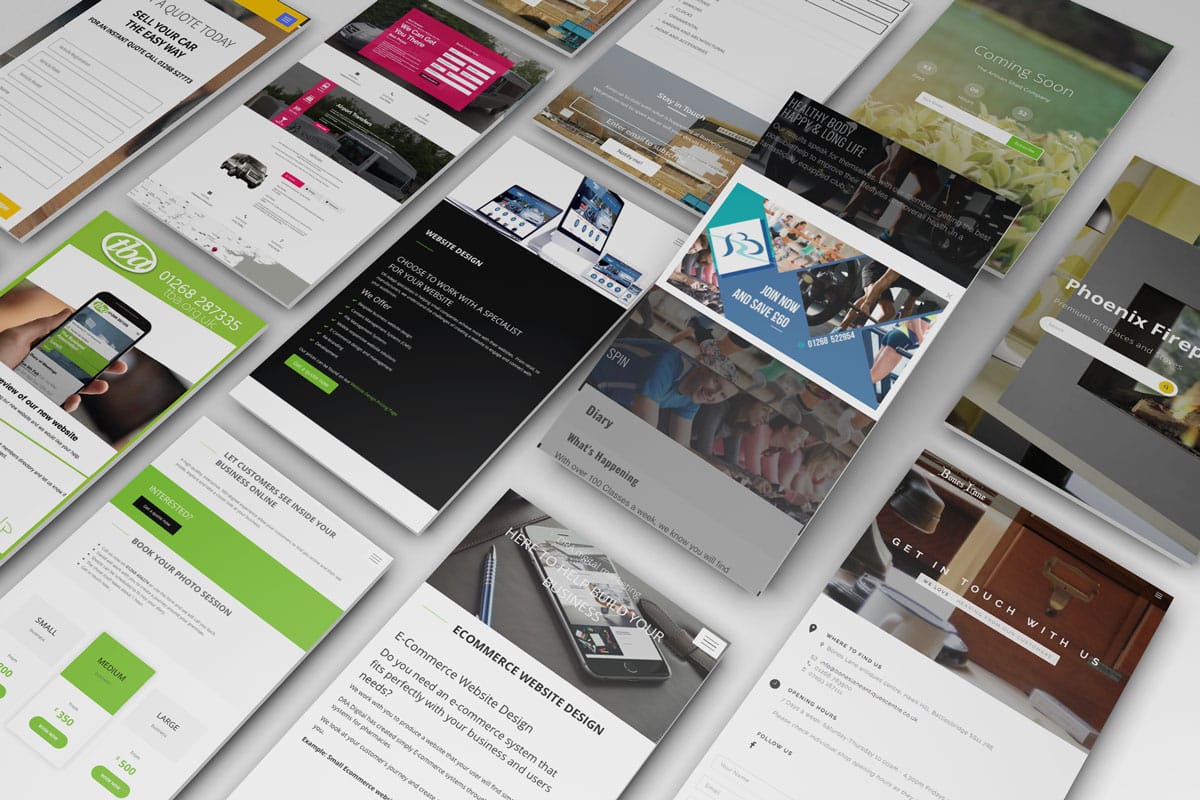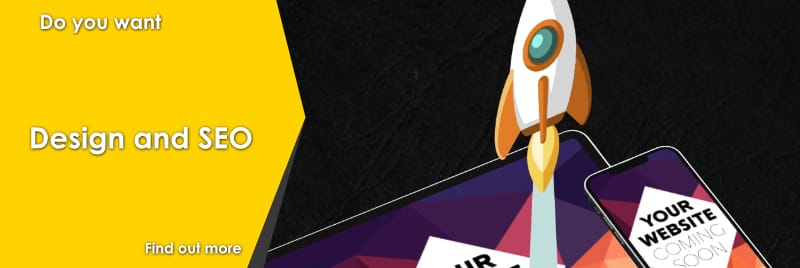The Complete Guide To A Landing Page
by Christina

What is a landing Page? The Complete Guide
All businesses that have an online presence need to undertake marketing, often referred to as online or digital marketing. One of the most effective tools for this is the landing page.
Landing pages have enormous power in driving conversions. The landing page should focus the customers attention and encourage them to take the action you want them to do.
Let's go a bit deeper and see how you can use them to your advantage.
What is a landing page?
A landing page is a standalone web page within your website created to achieve one goal: conversions. It is used in marketing and advertising. People can be directed to a landing page via a search engine results page, email marketing campaign, social media campaign or online advert. Landing pages are instrumental for generating leads, reaching the right customers, and providing data to help the direction of your marketing strategy overall.
Landing pages entice users to click on a strategic call-to-action (CTA), such as 'Get Started', 'Subscribe', or 'Buy now'.
The difference between a homepage and a landing page
Homepages are multifaceted, they include navigation to other areas of a website, and showcase multiple products or services, special offers, manufacturers details and customer reviews etc.
A landing page targets one marketing or sales goal. They focus the user and do nothing to distract them from that one offer. This often means there will be no navigation menu to take the user away from that page. The user either has to exit the page or convert. They only include the most essential information that will direct the users towards fulfilling your desired aim.
Because a landing page is laser focused it makes them highly effective when it comes to increasing conversion rates and lowering the costs of acquiring leads and making sales. Typically the more you have the higher the conversions.
Types of landing pages
There are two types of landing pages:
Lead generation: It typically includes a form where users can submit their contact information, allowing you to follow-up over email. Their aim is to open up a line of communication between you and a person who is interested in your offer.
Lead generation pages help you to gain insight into who your users are as well as giving you a means to contact them. You'll often have to offer an incentive to encourage a user to part with their personal information. Discount code, ebook, webinar, or exclusive content via a newsletter are all great offers.
Click through landing page: this type of landing page takes users to a sales or subscription page. It typically has a CTA that sends the visitor directly into the sales funnel, nudging them to buy or subscribe. They are mainly found on ecommerce websites that are focused on making immediate sales.
Before you choose which landing page is right for your business you'll need to define your goals first. Do you want to gather contact information for leads? Are you offering a unique sale? Once you've sorted out what you want then a highly targeted landing page can be created.
When to use a landing page
Here are the situations in which a landing page comes in handy:
Directing users to your product: create a landing page with an actionable CTA, such as 'Buy Now', you can bring users directly to your product purchase page or online store.
Free Trials: When offering subscription services, use a landing page to get users to sign up for a free trial.
Capturing leads from a blog post: you can get contact details from your blog readers if you offer them more in-depth content, such as a free e-book, whitepaper or webinar in exchange for their email address.
Obtaining newsletter subscribers: landing pages are great to encourage signups to newsletters. Including a strong CTA like 'Subscribe Now' or 'Sign UP' will tell people exactly what they need to do.
Event Registrations: You can capture leads with a landing page that entices people to register for a real world event, a webinar or online courses.
Memberships: use a landing page to get people to sign up for a paid membership that gives them additional perks, such as being a VIP, exclusive content or members only invites.
The Anatomy of a landing page
Here is what your landing page is going to need:
Powerful visuals: The best way to capture peoples attention is to use the best image, video or animation that is relevant to your campaign. Place the most important visuals towards the top of the page. You use visuals to create an emotional response from the visitor.
Enticing headlines
Using strong statistics, and actionable statements that speak to your audiences fears and needs are very effective.
Have a heading and a subheading that immediately resonates with your audience and makes a promise to resolve their problems or improve their lives.
Strong calls-to-action: This is the action you want the user to take. It could be Subscribe, Start My Free Trial, Register Today, or Buy. If you are stuck for calls-to-action check out top brands in your area of business to see what they use.
Summary of benefits: Users are more likely to convert if they understand the benefits of your offer, focus on explaining what the user can gain. Don't go over board, a landing page is a small space.
Customer Testimonials: back up your claims and include quotes from your actual customers who use your product.
Closing statement: Although most users won't scroll all the way to the end of a landing page, for those that do, they may need a closing statement to help convert them. Just reinforce the main points of your page.
Landing page best practices
As you start to develop your campaign, keep in mind the following best practices in order to create an effective landing page for your business:
Minimise navigation: You want to keep the user on the landing page, so avoid having a navigation menu, or multiple links that will distract the user or take them off the page. Keep the page simple and direct the user to the CTA.
Maximise readability: Keep the text short, sweet and skim-able, with plenty of white space. Every word you use should be encouraging the user to click on the CTA.
Be consistent: as you will be directing people to your landing page from an advert (email, social media, Google), avoid confusion by making sure the ad content matches the content on your landing page. This includes the design, colours, font and logos. It should also share similar features to your home page.
Prominent CTA: your landing page has to have a CTA and it has to stand out. The CTA button needs to contrast with the background colour and use clear direct language.
Who to target: landing pages should be targeting users in a specific stage of the marketing funnel. There is no point sending them to a landing page with a CTA saying 'Buy' when they are looking to subscribe to an event.
Forms: If you need the user to fill out a form, keep it as short as possible and only ask for vital information so you can contact them in the future, or enough information to complete the sale.
Focus on the consumer: it's not about you, focus on the needs of the consumer. Don't talk about how great you are, tell the customer how they can benefit from becoming a customer.
Importance of content placement: place the most important information at the top of the page, and less important towards the bottom. Make sure the headline, image and CTA can be seen without a person having to scroll down the page. Too much scrolling and you start losing the users interest.
Make it mobile-friendly: Far more people use a mobile device instead of a desktop computer to look at websites. Make sure your landing page looks good and works on different sized screens.
Getting traffic to your landing pages
Here are the four main avenues you can use to bring traffic to your landing page.
Social media: is the best platforms to use to engage with your target audience, this should be the first place you use to promote your landing page. Create a compelling post with a link to your page. Social media allows you to target people who are already interested in your brand and bring in quality traffic.
Email marketing: email marketing is the most effective method for attracting traffic to your landing page. These are people who have signed up to your emails/newsletters and want to hear about your offerings.
Get the subject line, visuals, layout and copywriting inline with the landing page and you'll notice a boost to incoming users.
Search Engine Optimisation (SEO): bring more users to your landing pages by optimising them so they rank high on search engine result pages. The higher your content is placed, the more people you'll get visiting your website.
DRA's content manager makes SEO easy. Title tags, meta descriptions and headings are easily accessible for you to change. Or you could undertake our SEO services so you don't have to take on a whole lot of marketing work as well as running your business.
SEO is like running a marathon, it takes time to move your website from obscurity to the first page results. But the more effort and time you put in the better the outcome, and it will be worth it in the end.
Paid ads: If you can undertake all of the above on your own, then other than your time, these marketing methods are free to you. However, if you want a faster response and feel you need a boost, then consider promoting your landing page via paid ads. You can advertise in social media and the search results. You'll be able to target people on their demographics and interests
You can use multiple methods to advertise your landing page. Make sure you monitor your results, because you want to put your money into the best advertising avenue for you.
Benefits of a landing page
Landing pages offer enormous growth potential for your business, here are the main benefits:
- Dramatically improve your conversion rate
- Provide you with valuable insights about your audience
- Increase brand recognition and awareness
- Landing page performance is measurable


